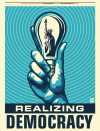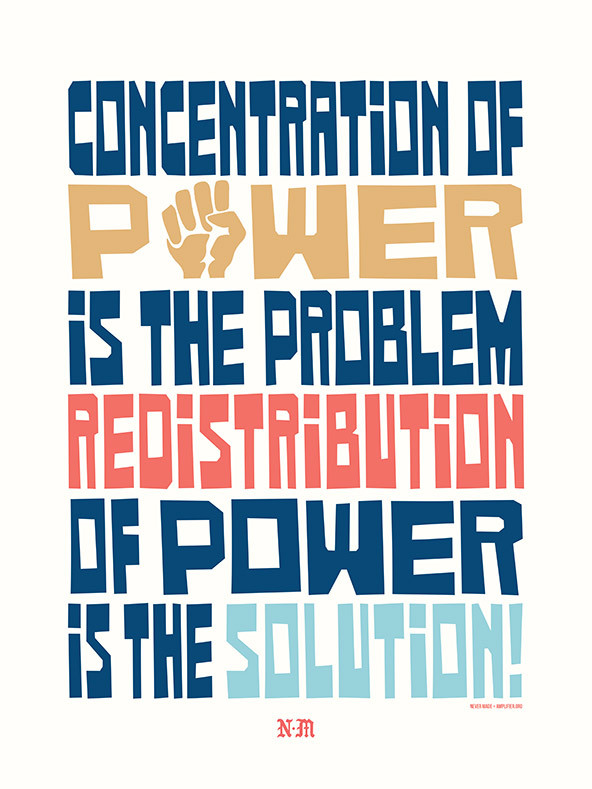 (Photo by iStock/satori13)
(Photo by iStock/satori13)
The past several years has brought a re-examination of the role of law enforcement in confronting some of the key challenges facing our democracy. This new vision of the prosecutor’s role includes dismantling elements of the criminal justice system that perpetuate racial and economic inequities, affirmatively wielding power in response to community concerns, and addressing economic exploitation, power disparities, and abuses of authority.
Realizing Democracy

These articles, funded by the Ford Foundation as part of the Realizing Democracy project, speak to an increasingly shared understanding among policymakers, civil society leaders, and scholars that democracy reform today must address underlying systemic roots of exclusion and inequality. The ideas reflect the views of the authors solely.
Criminal Justice Reform
There are close to 2,400 elected prosecutors in the United States. These prosecutors are mostly white, mostly male, and approximately 85 percent of them run for their positions completely unopposed. Along with their staff, they make daily discretionary decisions large and small that impact the lives of predominantly black, brown, and working-class communities. “Tough on crime” rhetoric and policies—perpetuated by Ronald Reagan’s War on Drugs, the 1994 Crime Bill, law enforcement television shows like COPS and Law & Order, and the nightly local news—became the metric for law enforcement at the expense of safe, healthy, thriving, and empowered communities. Police unions were the critical endorsements that district attorney (DA) candidates needed to vie for, and, once elected, the groups deemed most worthy of consideration. And although in court filings, prosecutors’ offices technically represented “The People,” many interests of working-class communities became the least of their concerns.
In 2015, Color Of Change, the nation’s largest online racial justice organization, gathered about 10 community organizations from across the country to reimagine the role of prosecutors. Many community-level organizations had been working in silos for decades to push back against a growing incarceration economy and cultural attitudes that had destroyed their communities. At that event, the organizations crafted six demands of prosecutors: to be transparent; to hold police accountable for overreaches and unnecessary violence; to treat kids like kids; to exercise their discretion and decline to prosecute petty and poverty-related offenses (like marijuana possession); to avoid the use of bail as leverage to incarcerate poor people before trial; and to avoid partisan prosecutions connected to immigration, the death penalty, and abortion.
At the national level, the power of the elected DA was finally emerging as a viable intervention in the effort to reform discriminatory policing and mass incarceration—a tangible victory for activists in the Black Lives Matter movement. Many organizations had independently reached the same conclusion: at minimum, more DA races—often a launching point for higher political office and yet ignored by both major political parties—should be contested.
The work is already underway. In early 2017, a former prosecutor and public defender, Whitney Tymas, created Justice & Public Safety PAC, a network of state political action committees that recruits, vets, and conducts research and polling on candidates and even supports them with television ads. Later that year, Miriam Krinsky’s organization Fair and Just Prosecution began to provide a support network and training for progressive elected prosecutors navigating the reinvention of their offices. In 2018, Color Of Change began compiling a first-of-its-kind database of elected prosecutors, including centralized contact information and a means to track prosecutors’ commitment to the six demands. Color Of Change PAC began reaching out to black voters nationwide with contested prosecutor races on the ballot, knocking on doors, sending text messages, and hosting community town halls to alert people that they had a choice in their upcoming election. In late 2018, grassroots organizer Becky Bond and racial justice activist Shaun King launched Real Justice PAC to support progressive prosecutor candidates in their campaign efforts.
These efforts have shown results. Progressive prosecutors have been elected in 13 cities across America. Even Bob McCulloch, the 26-year incumbent prosecutor in St. Louis county, Missouri, who refused to indict the officer who killed Mike Brown, has been replaced. Local and national community organizations joined together to host local prosecutor debates and to launch “First 100 Days” campaigns connected to the six demands, resulting in key policy and practice changes. For example, in Cook County, Illinois, progressive prosecutor Kim Foxx has reduced incarceration rates by 20 percent; violent crime also has decreased locally. She has also become a model for prosecutor transparency after an unprecedented data release summarizing case-level data dating back to roughly 2010. After Larry Krasner took office in Philadelphia in 2018, he ordered prosecutors in his office to stop charging people for possession of marijuana and related drug paraphernalia. He also sued 10 big pharmaceutical companies for their role in the opioid crisis. More than 40 prosecutors have signed a letter pledging not to support a wave of new state antichoice laws.
But progress hasn’t come without setbacks and backlash. In 2017, more than 300 grassroots activists took to Florida’s state capitol to protect newly elected state attorney Aramis Ayala, who then-governor Rick Scott threatened to remove from office after media reports of her opposition to the death penalty. (She later announced that she wouldn’t run for reelection in 2020.) In August, FOX News host Tucker Carlson, aided by US Attorney William McSwain, dedicated a segment to attacking Krasner. The same month at a fraternal order of police national conference, US Attorney General William Barr, coauthor of a 1992 Department of Justice report called “The Case for More Incarceration,” criticized “the emergence … of district attorneys that style themselves as ‘social justice’ reformers.”
Nonetheless, community groups and national political organizations continue to reimagine the prosecutor’s office as one responsive to the people. In the four years since hosting its first meeting on the subject, Color Of Change’s annual convenings have quadrupled in size and now serve as a congregating space for community groups seeking local reform. Prosecutors are now a focal point for community organizations in close to 20 states and growing.
 (Art by Never Made)
(Art by Never Made)
Reimagining Law Enforcement
Along with criminal justice reform, a progressive law enforcement office would use its powers to fight abuses in which the powerful prey on people from working-class or marginalized communities. This would include taking on abusive landlords, predatory lenders, corrupt elected officials, hate crime perpetrators, and corporate and government leaders whose decisions have devastating consequences for ordinary people, such as poisoned water. And it would involve doing so in collaboration with affected communities and grassroots organizations.
The growing momentum among state and local law enforcement to enforce workers’ rights provides a concrete example of what progressive law enforcement might look like. This work of state attorneys general (AGs) and local prosecutors (DAs) emerges in a context of political and economic developments over the last several decades that have left workers in a terribly precarious situation. These trends include low union density, subcontracting and other “fissuring” of the workplace, forced arbitration, technological changes, employer concentration and resulting monopsony, and most recently, the Trump administration’s antiworker agenda and immigration enforcement policies. They have resulted in high rates of violations of workplace laws among many employers, and degradation of working conditions. Historically, AGs and DAs have left such matters to federal and state labor departments and the private bar, but in the past several years, a growing number have begun to include protection of workers as a part of their office’s mission.
State attorneys general have been at the forefront of this trend. Five years ago, only three AG offices had dedicated workers’ rights units (California, Massachusetts, and New York); now, six others have joined them (the District of Columbia, Illinois, Michigan, Minnesota, New Jersey, and Pennsylvania).
These new units were created because AGs made the decision to prioritize worker issues, and units have been developed with community input. The inception of the workers’ rights unit in the Washington, DC, AG’s office provides an example of the synergistic interplay between community and government in giving rise to these developments. Worker organizations, including unions and DC Jobs With Justice, pressed for a 2016 law granting the AG’s office jurisdiction to handle wage cases; the following year, DC Attorney General Karl Racine created a workers’ rights unit in the office.
The creation of a dedicated unit ensures that an office will be involved in workers’ rights in a continuous, proactive, strategic, and in-depth manner—not as a one-time event. It embeds workers’ rights lawyering within the agency; specialized attorneys develop ongoing relationships with advocacy groups, unions, and worker centers. Establishment of a dedicated unit institutionalizes the work, increasing the likelihood that it will continue beyond a particular administration.
AG offices with dedicated workers’ rights units have brought cases to combat wage theft, payroll fraud, unfair noncompete agreements, and wrongful treatment of workers as independent contractors instead of employees (misclassification). These cases have involved small employers in the underground economy and national corporations such as Domino’s Pizza, WeWork, Jimmy John’s, and the national electrical contractor Power Design, among others. Some AGs also have played a leading role in the legislative process. In 2019, Minnesota AG Keith Ellison was instrumental in achieving stronger antiwage theft laws, and New York AG Letitia James proposed legislation to strengthen antiretaliation protections for immigrant workers.
The focus on workers’ rights in key offices has helped create opportunities for a greater number of state AGs to take on labor issues through participation in multistate efforts, such as opposing proposed federal antiworker regulations, filing a lawsuit against the Occupational Safety and Health Administration, and investigating no-poach agreements used by fast food franchisors.
Workers’ rights enforcement requires extensive collaboration and partnership with civil society—worker centers, unions, advocacy groups—because these groups are based in communities, know conditions on the ground, and have the trust of workers who may be unlikely to reach out to the government. The AG offices that have taken on this work have developed relationships with community and worker organizations within their jurisdiction. These collaborations allow groups to have ongoing conversations with and access to the AG offices, including referring cases, raising issues of concern, and helping offices develop cases by, for example, identifying potential targets and bringing witnesses to an office. In addition, many AG offices have chosen attorneys with past experience as workers’ rights lawyers or in advocacy organizations. These lawyers bring their perspective, relationships, and experience with them.
This collaboration is not without guardrails. AG offices conduct their enforcement work independently, and must be unbiased in their investigations. Being unbiased, however, is distinct from being neutral. As California Labor Secretary Julie Su wrote, “We are not neutral about what fundamental protections must exist in the workplace. We are on the side of the law.” But there are important limits to community input. For example, AG offices independently make the decisions about what cases to bring, what evidence is needed, how to build a case, whether to handle a case civilly or criminally, and what parties to sue or charge. These limitations are appropriate; the AG brings cases on behalf of the people. Nonetheless, AG offices take worker organizations seriously as partners; constituencies do not drive the agenda, but they have meaningful impact and a real voice.
As workers’ rights enforcement becomes institutionalized within some AG offices, one next-level question is whether the collaborative relationships between government and community organizations can also be institutionalized. Two programs within the Massachusetts AG’s Office offer possible answers. The Fair Labor Division has regularly scheduled meetings with a labor advisory council (comprised of labor leaders) and also with the Fair Wage Campaign (comprised of immigrant worker centers and legal services offices). A different program in the office awards grants to local consumer advocacy groups for outreach and education to consumers; a similar program could be created for worker advocacy groups.
In addition to AGs, a number of DAs are taking on employer committed crimes against workers, bringing prosecutions for crimes including wage theft (under, for example, larceny, theft of services, or explicit wage theft statutes), payroll fraud, human trafficking, workplace sexual assault, and predictable and preventable workplace fatalities. The Center for Progressive Reform has created a first-of-its-kind “Crimes Against Workers” database that lists many state criminal prosecutions of employers.
This work requires law enforcement officials to think differently. Treating wage theft as “theft” requires understanding economic inequities and the imbalance of power between workers and employers. Some DAs are stepping into the breach that leaves so many workers vulnerable to exploitation, using their authority to be responsive to a new set of problems stemming from power imbalances. They are using their power to redress harms caused to people who have less power in society. In so doing, prosecutors can inherently shift the balance, demonstrating to employers and workers alike that people who speak up can bring about change, that there are limits to employers’ power, and that bosses cannot act with total impunity.
As with AG offices, DA involvement in these cases requires collaboration and relationships with community and worker organizations. It also requires new methods of learning about cases and trends. While a typical criminal prosecution might originate with the police, employer crime cases often come through referrals from community-based and worker organizations.
In this work, and in other cases confronting corporate abuse, DAs and AGs are taking a broader view of what it means to represent “the people.” More than simply standing up in court, it means deep engagement and partnership with a wide range of organizations in civil society, and in fact, with the people themselves.
This article appeared in the Winter 2020 issue of the magazine with the headline: "Representing the People"
Correction: November 21, 2019 | An earlier version of this article misidentified who served as governor of Florida in 2017. Rick Scott held the position.
Support SSIR’s coverage of cross-sector solutions to global challenges.
Help us further the reach of innovative ideas. Donate today.
Read more stories by Arisha Hatch & Terri Gerstein.

